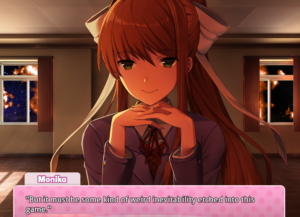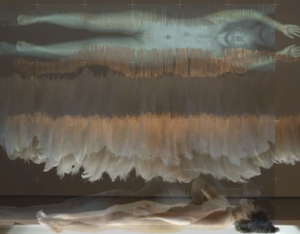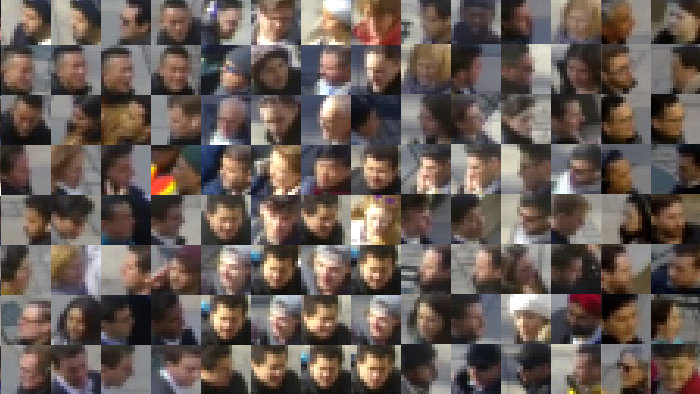The Journal of the AIUCD, Umanista Digitale has just published a paper I wrote with Marco Passarotti on The Index Thomisticus as a Big Data Project. This actually started for me as a blog post, The Index Thomisticus as Project. Marco has added a section on Busa’s views about developing corpora.
Apple News and News+
After a month or so of being subscribed to Apple News+, today I dropped the subscription. It was one more subscription, and they add up. More importantly, it wasn’t giving me the news. When Notre Dame was burning Apple News+ was feeding me inane lifestyle stories. It didn’t seem to be able to gather and present current news, just glossy magazine articles. Perhaps it wasn’t meant to compete with Google News. Perhaps I wasn’t meant to pay for it.
AI, Ethics And Society
Last week we held a conference on AI, Ethics and Society at the University of Alberta. As I often do, I kept conference notes at: philosophi.ca : AI Ethics And Society.
The conference was opened by Reuben Quinn whose grandfather signed Treaty 6. He challenged us to think about what labels and labelling mean. Later Kim Tallbear challenged us to think about how we want the encounter with other intelligences to go. We don’t have a good track record of encountering the other and respecting intelligence. Now is the time to think about our positionality and to develop protocols for encounters. We should also be open to different forms of intelligence, not just ours.
$432 000 painting “by AI” sold at Christie’s
A painting created using GANs (generative adversarial networks) sold for $432 000 at Christies today.
Last year a $432 000 painting “by AI” sold at Christie’s. The painting was created by a collective called Obvious. They used a Generative Adversarial Network. In an essay titled, A naive yet educated perspective on Art and Artificial Intelligence, they talk about how they created the work.
Generative Adversarial Networks (GANs) analyze tens of thousands of images, learn from their features, and are trained with the aim to create new images that are undistinguishable from the original data source.
They also point out that many of the same concerns people have about AI art today were voiced about photography in the 19th century. Photography automated the image making business much as AIs are automating other tasks.
Can we use these GANs for other generative scholarship?
Centrelink scandal
Data shows 7,456 debts were reduced to zero and another 12,524 partially reduced between July last year and March
The Guardian has a number of stories on the Australian Centrelink scandal including, Centrelink scandal: tens of thousands of welfare debts wiped or reduced. The scandal arose when the government introduce changes to a system for calculating overpayment to welfare recipients and clawing it back that removed a lot of the human oversight. The result was lots of miscalculated debts being automatically assigned to some of the most vulnerable. A report, Paying the Price of Welfare Reform, concluded that,
The research concludes that although welfare reform may be leading to cost savings for the Department of Human Services (DHS), substantial costs are being shifted to vulnerable customers and the community services that support them. It is they that are paying the price of welfare reform.
Doki Doki Literature Club!
The Literature Club is full of cute girls! Will you write the way into their heart?
Dr. Ensslin gave a great short survey of digital fiction includ the Doki Doki Literature Club! (DDLC) at the Dyscorpia symposium. DDLC is a visual novel created in Ren’Py by Team Salvato that plays with the genre. As you play the game, which starts as a fairly typical dating game, it first turns into a horror game and then begins to get hacked by one of the characters who wants your attention. The character, it turns out, has both encouraged some of the other girls (in the Literature Club) to commit suicide, but they edits them out of the game itself. At the end of the game she has a lengthy face-to-face with you breaking the fourth wall of the screen.
Like most visual novels, it can be excruciating advancing through lots of text to get to the point where things change, but eventually you will notice glitches which makes things more interesting. I found myself paying attention to the text more as the glitches drew attention to the script. (The script itself is even mentioned in the game.)
DDLC initially mimics the Japanese visual novel genre, down to the graphics, but eventually the script veers off. It was well received in game circles winning a number of prizes.
The Body in Question(s)

Isabelle Van Grimde gave the opening talk at Dyscorpia on her work, including projects like The Body in Question(s). In another project Les Gestes, she collaborated with the McGill IDMIL lab who developed digital musical instruments for the dancers to wear and dance/play.
Van Grimde’s company Corps Secrets has the challenge of creating dances that can travel which means that the technologies/instruments have to . They use intergenerational casts (the elderly or children.) They are now working with sensors more than instruments so the dancers are free of equipment.
We Built a (Legal) Facial Recognition Machine for $60
The law has not caught up. In the United States, the use of facial recognition is almost wholly unregulated.
The New York Times has an opinion piece by Sahil Chinoy on how (they) We Built a (Legal) Facial Recognition Machine for $60. They describe an inexpensive experiment they ran where they took footage of people walking past some cameras installed in Bryant Park and compared them to known people who work in the area (scraped from web sites of organizations that have offices in the neighborhood.) Everything they did used public resources that others could use. The cameras stream their footage here. Anyone can scrape the images. The image database they gathered came from public web sites. The software is a service (Amazon’s Rekognition?) The article asks us to imagine the resources available to law enforcement.
I’m intrigued by how this experiment by the New York Times. It is a form of design thinking where they have designed something to help us understand the implications of a technology rather than just writing about what others say. Or we could say it is a form of journalistic experimentation.
Why does facial recognition spook us? Is recognizing people something we feel is deeply human? Or is it the potential for recognition in all sorts of situations. Do we need to start guarding our faces?
Facial recognition is categorically different from other forms of surveillance, Mr. Hartzog said, and uniquely dangerous. Faces are hard to hide and can be observed from far away, unlike a fingerprint. Name and face databases of law-abiding citizens, like driver’s license records, already exist. And for the most part, facial recognition surveillance can be set up using cameras already on the streets.
This is one of a number of excellent articles by the New York Times that is part of their Privacy Project.
Your brain probably is a computer, whatever that means
We’re certainly on to something when we say the brain is a computer – even if we don’t yet know what exactly we’re on to
Kevin Lande has written a fine essay for Aeon titled, Your brain probably is a computer, whatever that means. The essay starts with the apparent contradiction that “We have clear reasons to think that it’s literally true that the brain is a computer, yet we don’t have any clear understanding of what this means.”
We know of many cases where the brain clearly computes things, like where a sound is coming from, but we don’t know what sort of computer the brain is, or if it is only a computer. For that matter we don’t know a lot about what computation is either.
Food for thought.
Are Robots Competing for Your Job?
Are robots competing for your job?
Probably, but don’t count yourself out.
The New Yorker magazine has a great essay by Jill Lepore about whether Are Robots Competing for Your Job? (Feb. 25, 2019) The essay talks about the various predictions, including the prediction that R.I. (Remote Intelligence or global workers) will take your job too. The fear of robots is the other side of the coin of the fear of immigrants which raises questions about why we are panicking over jobs when unemployment is so low.
Misery likes a scapegoat: heads, blame machines; tails, foreigners. But is the present alarm warranted? Panic is not evidence of danger; it’s evidence of panic. Stoking fear of invading robots and of invading immigrants has been going on for a long time, and the predictions of disaster have, generally, been bananas. Oh, but this time it’s different, the robotomizers insist.
Lepore points out how many job categories have been lost only to be replaced by others which is why economists are apparently dismissive of the anxiety.
Some questions we should be asking include:
- Who benefits from all these warnings about job loss?
- How do these warnings function rhetorically? What else might they be saying? How are they interpretations of the past by futurists?
- How is the panic about job losses tied to worries about immigration?






